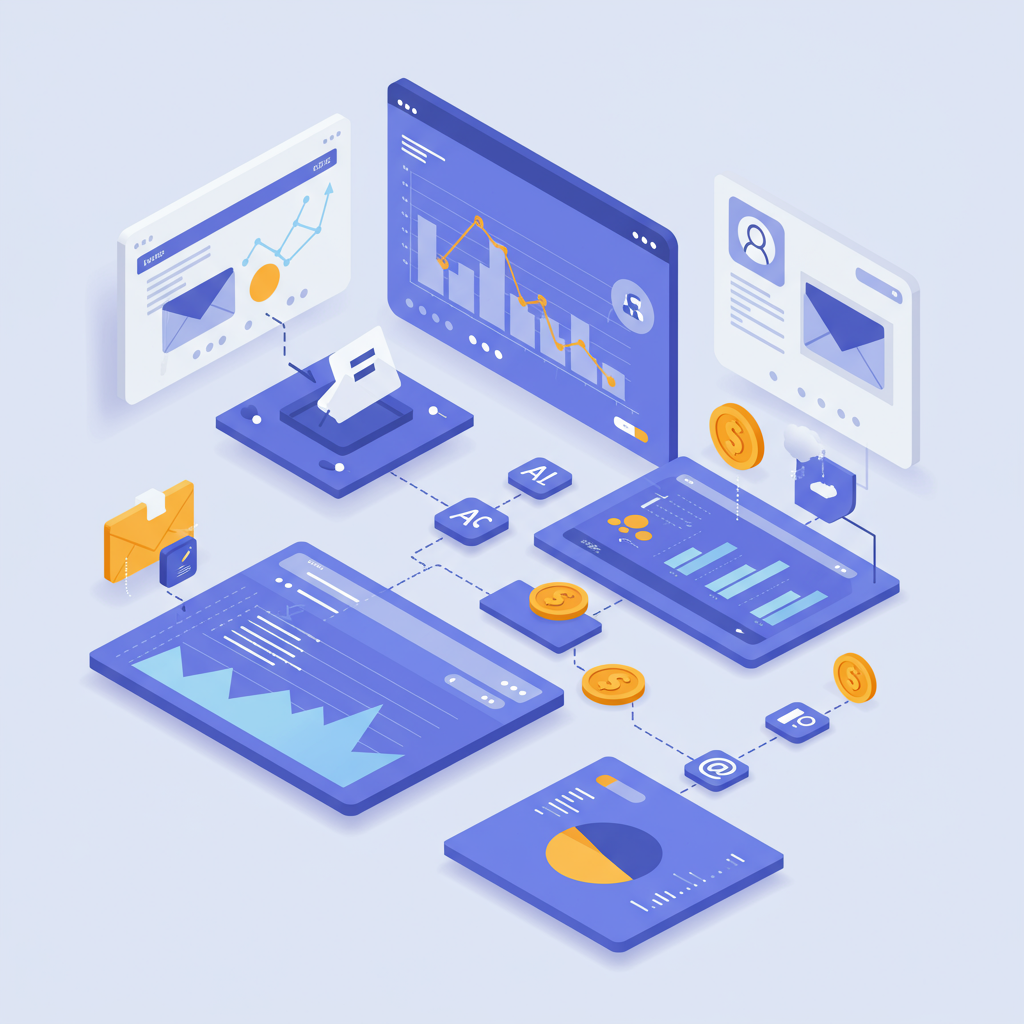Unlock unparalleled growth and customer loyalty with advanced email marketing strategies tailored for the future of e-commerce.
As we look towards 2026, the landscape of e-commerce continues to evolve at a rapid pace. While new channels emerge, I firmly believe that email marketing remains the bedrock of direct customer communication for any Shopify merchant.
It’s not just about sending newsletters anymore; it’s about intelligent, automated, and hyper-personalized interactions that drive significant revenue and build lasting relationships.
For me, the key to thriving in this environment is embracing sophisticated email marketing automation. It allows us to be present and relevant in our customers’ inboxes without constant manual effort.
Think of automation as your tireless sales assistant, working 24/7 to nurture leads, recover abandoned carts, and encourage repeat purchases.
My first piece of advice for 2026 is to ensure your email list is meticulously segmented. Generic blasts are a relic of the past; our customers expect and deserve tailored content.
We should be segmenting based on purchase history, browsing behavior, engagement levels, demographics, and even zero-party data collected through quizzes or preference centers.
Let’s dive into the core automation flows that every Shopify store must have in place, optimized for the 2026 consumer.
The Welcome Series: This is your first impression. I recommend a multi-stage series, not just a single email. The first email should deliver a warm greeting and perhaps a discount.
Subsequent emails can introduce your brand story, highlight best-selling products, or share valuable content related to your niche. We aim to build trust and excitement from the outset.
Abandoned Cart Recovery: This remains a goldmine. In 2026, our abandoned cart flows should be highly dynamic, showing the exact products left behind and potentially offering personalized incentives based on cart value or customer history.
I’ve seen incredible results by adding a second or third reminder, sometimes even incorporating SMS for those who’ve opted in, to gently nudge them back to complete their purchase.
Post-Purchase Flows: The transaction isn’t the end; it’s the beginning of a new relationship. My post-purchase series includes order confirmations, shipping updates, and then moves into product care tips or complementary product recommendations.
We can also use this flow to solicit reviews, encourage social sharing, and introduce loyalty program benefits, fostering a sense of community and appreciation.
Win-Back Campaigns: Customers go dormant, and that’s okay. Our win-back automations are designed to re-engage them with compelling offers, new product announcements, or simply a reminder of the value we provide.
I often segment these based on how long they’ve been inactive and tailor the message accordingly, sometimes even asking for feedback on why they haven’t returned.
Browse Abandonment: This is becoming increasingly powerful. If a customer views a product multiple times but doesn’t add it to their cart, we can trigger an email showcasing that product and similar items.
It’s a subtle, helpful reminder that can convert interest into intent, but we must be mindful of privacy regulations and ensure we have the necessary consent.
Now, let’s talk about advanced strategies for 2026. Hyper-personalization, driven by AI and predictive analytics, is no longer optional; it’s expected.
I’m leveraging AI to predict the ‘next best offer’ for each customer, recommending products they are most likely to buy based on their unique browsing and purchase patterns.
Dynamic content blocks within emails are also crucial. Imagine an email where product recommendations, pricing, and even imagery update in real-time based on inventory or the customer’s latest interactions.
Integrating SMS/MMS into our email flows creates a truly omnichannel experience. For urgent updates or flash sales, a quick text can complement an email perfectly.
I also strongly advocate for integrating your loyalty program directly into your email automation. Trigger emails for points earned, reward redemption opportunities, and tier advancements.
Mapping out the entire customer lifecycle, from first touch to loyal advocate, allows us to design sophisticated, interconnected email journeys that anticipate needs and build deep connections.
A/B/n testing, optimized by AI, is how we continuously improve. We’re testing everything: subject lines, send times, call-to-actions, and even the length of our emails.
Collecting zero-party data through interactive quizzes or preference centers within our emails provides invaluable insights, allowing us to personalize even further.
Subscription management flows are also vital for businesses with recurring revenue models. Automated emails for upcoming renewals, payment failures, and subscription upgrades or downgrades ensure a smooth customer experience.
Event-triggered emails, such as birthday wishes, anniversary discounts, or notifications for product restocks, add a personal touch that customers truly appreciate.
Finally, I can’t stress enough the importance of robust analytics. We need to go beyond open and click rates. I’m looking at conversion rates per flow, average order value from automated emails, and customer lifetime value.
What do you think about these strategies? Are you already implementing some of them, or do you see new opportunities for your Shopify store?
The tools available on Shopify, both native and through third-party apps, are more powerful than ever. My philosophy is to start simple, get the core automations right, and then layer on the advanced strategies.
The future of email marketing for Shopify merchants in 2026 is incredibly exciting. By embracing automation, personalization, and continuous optimization, we can build stronger brands and achieve remarkable growth.






